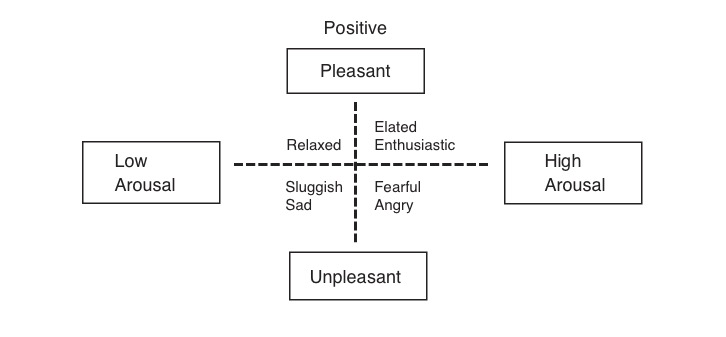There are ten basic emotions: Joy, Excitement, Surprise, Sadness, Anger, Disgust, Contempt, Shame and Guilt.
In describing emotions, psychologists classify emotions as variations on the dimensions – pleasant (or positive) versus unpleasant (or negative) and low versus high arousal (Russell et al, 1989).
Arousal levels can range from elated enthusiuasm and energized, such as olympic gymnasts and successful college students, to sluggish and sad, which could include for example someone suffering stage fright.

Emotions are motivating forces, preparing us for action. They are spontaneous biological processes that are out of our control. They can be understood by others through spontaneous physical expression such as laughter.
Feelings, however, are how we interpret the emotions we experience. We are consciously aware of our feelings and we can make decisions based on them. As we have control over our feelings, others cannot guess what they are from our behavior.
Psychology of Emotions
The psychology of emotions has advanced slowly, remaining somewhat subjective, until simple questions were asked as to the purpose of emotions, and how they helped us to survive and advance. In a ground breaking book “The Laws of Emotions” by psychologist Nico Frijda, 2006, he sees emotions as lying at the crossroads of our biological and cognitive processes. Some are biologically inherent or innate. These are basic emotions we share with other animals, such as fear. Others are in response to thoughts and are clearly cognitive, such as guilt.
Frijda sees basic emotions as an opportunity for greater self-awareness. Our emotions accompany a biological arousal that makes us notice them and thus we become more aware of our feelings. This allows us to factor them into the choices we make, and with honest reflection, to deepen our self-awareness.
This report is not a diagnosis. We hope this information can guide you toward improving your life.
Review our Knowledge Base or the links displayed on this page for similar and related topics.

